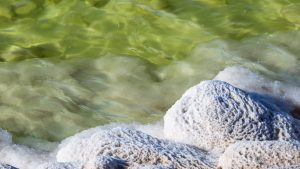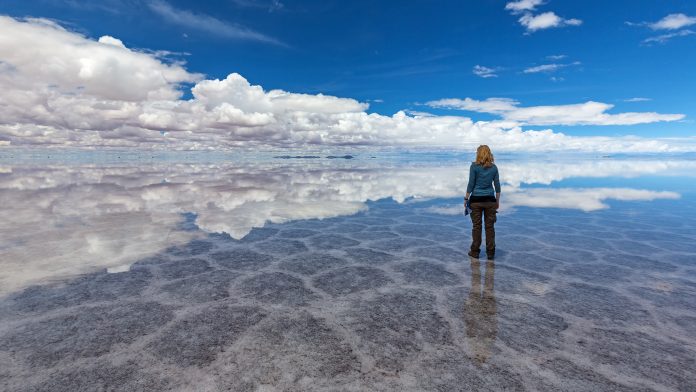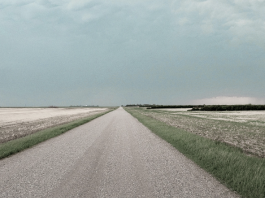Rob Shewchuk, CEO of LithiumBank, discusses the latest progress made on the company’s lithium brine development and exploration projects in Western Canada.
Based in Western Canada, LithiumBank Resources Corp. is a lithium development company dedicated to advancing direct brine lithium projects to production. LithiumBank has acquired and explored over four million acres of potential Direct Lithium Extraction (DLE) amenable assets within its portfolio and is making major progress at its key district-scale projects, including the Boardwalk Lithium Brine Project, Park Place exploration project in Alberta and its Saskatchewan portfolio of claims.
With ambitious plans for further development and exploration, 2023 is set to be a year of great significance for the company. To learn more about the company’s key aims and objectives for the year ahead, The Innovation Platform spoke to CEO Rob Shewchuk.
With a number of high-quality development projects within your portfolio, how has LithiumBank positioned itself to be the next battery-grade lithium producer?
What is different about us is that we started the business in a perfect storm. At the time of launch in 2019, the price of the commodity lithium was suffering significantly, and as a result, capital markets were closed. Companies that had good properties, especially in Western Canada, were unable to provide sufficient funds and meet certain work commitments required by the government. For example, every two years, it was a requirement to spend C$5 per hectare of land acquired. This was both a technical and financial challenge, as the costs associated with building a resource in the industry were much lower than this. An asset of one million hectares, for instance, would require a spend of C$5m, which is difficult to achieve when building a resource in this industry is as simple as taking water samples from an already-producing well. A sampling programme can cost as little as C$10,000.
Before we launched the company, I had been working with E3 Lithium. They took a different path by progressing technology, as they could get a grant for that, which allowed them to keep their assets in good standing. I knew that the rest of the market would not be as sophisticated in managing these challenges. Many junior companies moved their focus from lithium to gold as the lithium prices were too low to finance.

I determined that several years of deflated pricing would mean that people would have to return their claims if they were unable to complete the work required. Thus, presenting an opportunity for our company to pull in all of those claims as they came back into the Alberta regulator and became stake-able. We raised our capital with the intention to acquire these claims, strategically selecting them based on seismic data. Alongside raising this capital and purchasing seismic data, we also determined the location of the Leduc formation brine, as this was important for the grade of lithium, and identified the location of the confined aquifers that were large enough to create district-scale assets.
What sets us apart is that we are the only company developing multiple district-scale projects born out of an over four-million-acre exploration portfolio.
Have there been any recent updates in the company itself?
We have recently announced that Paul Matysek has joined us as the Executive Chairman. Paul is very important to our game plan, which is to de-risk district-scale assets and attract partners to develop them. He is a solutions mining expert who has sold six projects. He has resourced PEA-level projects, all of which have moved forward into production, including both a uranium and potash mine in Saskatchewan, as well as two lithium projects in South America.
Paul sold those junior projects for a total of over $2.5bn in shareholder value. We are very proud to have Paul join us; he has been immensely helpful, providing great mentorship, and it is a delight to work with him daily.
When can we expect to see some economics/ a preliminary economic assessment at your Boardwalk Project?
Boardwalk has been our flagship district-scale project until we added Park Place recently. You can see a Monopoly theme with our projects, which is reflective of how we think about the best brine assets with the largest potential to become a near-term producer. On the Monopoly board of opportunities, Boardwalk would be one of the best to achieve this.
To get to a position of opportunity, there are several things you must achieve in the mining business. The first is to define a resource with various qualities required to be an asset that you can put into production at scale. These qualities are scale, grade, deliverability, leverageable infrastructure and ease of permitting.
Generally, grade is king in every resource business. However, this is not true in lithium, where a combination of grade and deliverability is critical. There is no use for high-grade lithium with no deliverability; you must have enough of both.
Ease of permitting is also important. To have something easier to permit, it is best to have something that is already permitted for resource extraction in general. This is what we have at Boardwalk, which has 550 existing wells that are no longer producing.
The existing set-up from past exploration presents a perfect scenario. Mother nature offered these resources and, now that the oil and gas supply has been exhausted, it is positioned for lithium exploration with ready-made infrastructure to support it. This includes fresh water supply, a four-lane divided highway, gas lines and power. The area is also home to people with all the right skillsets, such as engineers and geologists who have been working in the oil and gas business for a very long time, that we can leverage.
Environmental permitting is another important benefit. There is only one operator in this area, who has been working here for over 50 years, and they have carried out the appropriate environmental work.
All these factors make Boardwalk stand out. It is a phenomenal property in terms of scale, comparable grade with other projects in the province with a preliminary economic assessment (PEA), and has maximum deliverability. The infrastructure is fantastic and we believe the ease of permitting is unmatched.
What are the key catalysts for your work over the next 12 months? What can we expect from LithiumBank?
We are now focused on taking the Boardwalk project from an inferred to measured and indicated resource and then to a proven and probable reserve, which will make it significantly more attractive to major investors as we achieve each of those progressive milestones.
Over the last year, we have completed the hydrogeological study on Boardwalk, which is necessary to inform the PEA. The findings from this study determine the productivity potential of the area and identify its geological characteristics. We then carried out the Direct Lithium Extraction (DLE) test work, regarding the front end of the plant where the concentration process takes place. We concentrate the lithium to over 1% post reverse osmosis, which will hopefully increase to over 5% as technology improves. That is what will make us competitive with conventional sources of lithium. We proved that we could take our brine, put it in one end of a DLE process at a bench scale, and then produce a product at the other end, as is required for a PEA. The DLE test work, the hydrological study, and the resource that feed into the PEA offer the first high-level look at the economic potential of a project.
Typically, companies in our field are likely to receive a significant valuation rerating following a positive PEA, as it offers a lot more visibility into the value of the asset. We hope this to be the case following the release of our PEA results at Boardwalk, which we expect to report by the end of Q1 2023. Our direct brine comparables, such as E3 Lithium, Standard Lithium and Lake Resources, all saw their market caps increase significantly from less than $50m pre-PEA into the billions following the release of their PEAs. We are looking for Boardwalk to perform well in this PEA and lead to a document that people can really get behind and see the value in.
Beyond Boardwalk, we have our Park Place district, which is over 1.5 million acres and where the Leduc is over 350m thick. Recent sampling from a well at Park Place showed an average lithium grade of 77mg/l, which is an excellent grade for our purposes and there is historic well data showing concentrations over 130mg/l at Park Place. We also performed a hydrogeological study for Park Place that we announced results from on 27 February that concluded Park Place to be the largest contiguous lithium-rich brine project by volume in North America based on over 57,000 core measurements from 675 wells within the study area. We will take another set of samples from Park Place in the nearer term and are looking to put out an NI43-101 Inferred Resource at Park Place sometime in the first of half of this year. We are optimistic it will compare favourably with the largest district-scale direct brine inferred lithium resources ever reported.
We also have an upcoming PEA for Park Place. We expect this will take a tenth of the time of the Boardwalk PEA, as we will be able to leverage all of the work completed at Boardwalk. This includes the non-disclosure agreements (NDAs), engagements with technology companies, laboratory testing, set-up, protocols, procedures and QA/QC. By the end of the year, we expect to be the only lithium development company with multiple PEAs on multiple district-scale projects.
We also have three projects in Saskatchewan with a total of 336,000 acres. That is the province’s largest portfolio of crown land claims acquired via auction from the Saskatchewan government. We are encouraged to see one of our peers in the area, Prairie Lithium, recently acquired by Arizona Lithium. We think that we can add a lot of value to our portfolio in Saskatchewan by following the same methodology used by Prairie, which is to take water samples from our three properties and then do some re-entries if required. We can then build resources and carry out PEAs on each of those projects, which we expect to complete within the next 12-24 months.
What potential does Alberta have to become a major player in producing battery-grade lithium brine?
The total global production of lithium carbonate equivalent (LCE) in 2021 was 550,000 tonnes LCE. We believe our Alberta district-scale opportunities each have the potential to scale to produce between 100,000-200,000 tonnes of lithium LCE per annum. The ramification of which, when also factoring in the work carried out by other lithium development companies in Alberta, is the potential for Alberta-based lithium producers to at some point surpass the equivalent of the entire global production of lithium LCE from 2021.
This scale is only good if there is a demand for it, and we are seeing demand rise significantly each time it is reported on. That demand is currently expected to go from 550,000 tonnes LCE in 2021 to over 1.5 million tonnes LCE by 2025 and over 3 million tonnes LCE by 2030.
It will become very difficult for the world to provide conventional sources of lithium brine, such as hard rock and salars, to keep up with the rapid rate of demand as such projects take a long time to bring to market.
It will be challenging to see many conventional lithium projects come to market before 2030. Here, we have a significant opportunity in Alberta to bring these resources to market, starting in the 2025-2026 period, which will be critical for this era of electrification to become a reality.
Please note, this article will also appear in the thirteenth edition of our quarterly publication.









